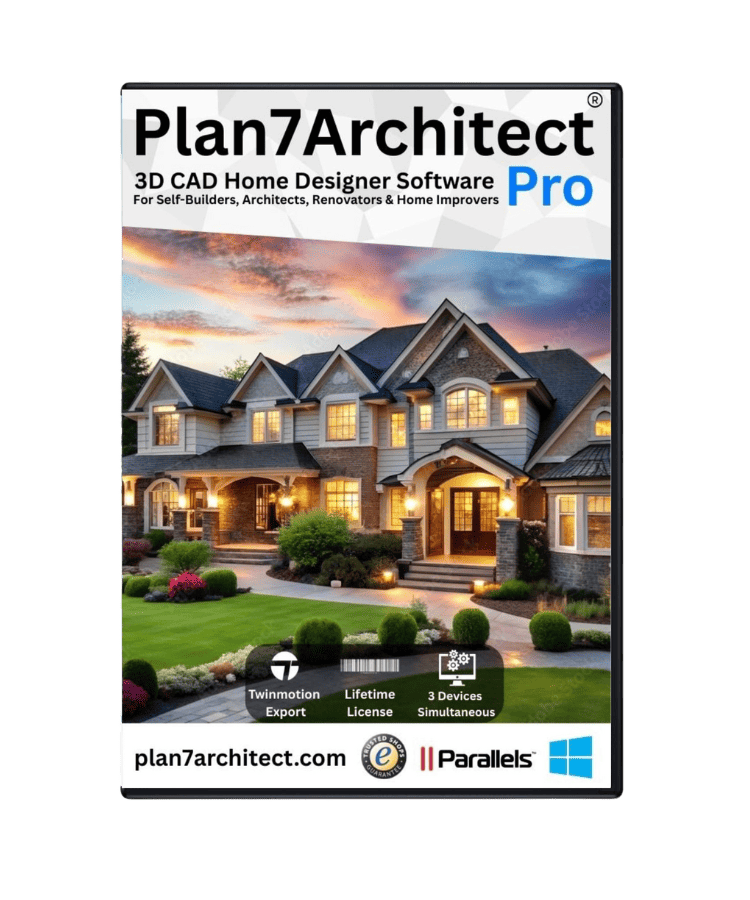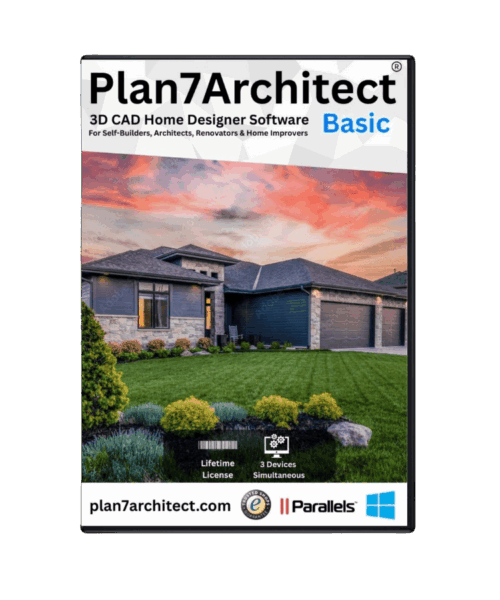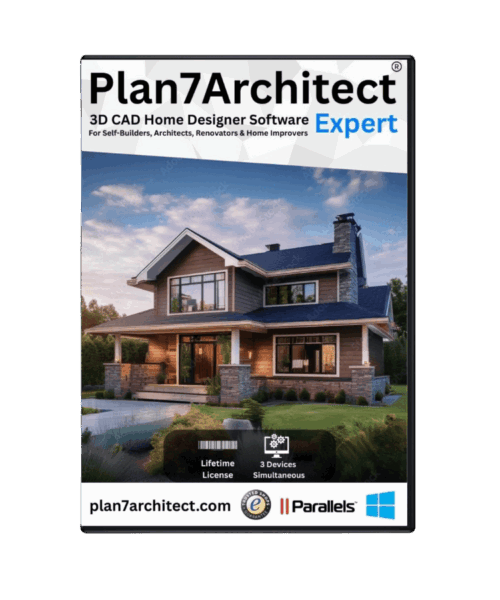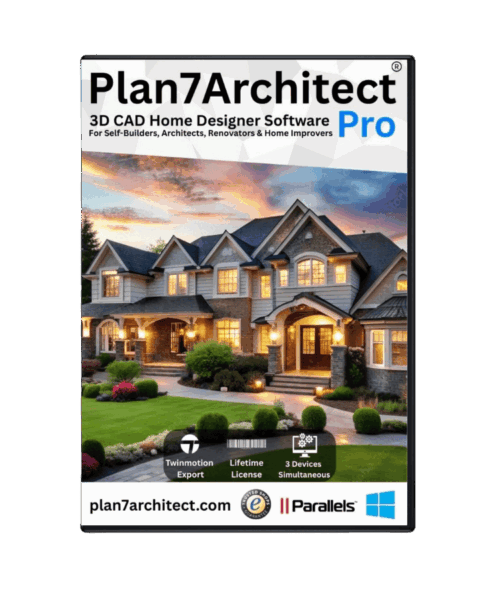If you’re planning to build your own single-family house or simply want to visualize your ideas before meeting with a contractor, Plan7Architect gives you the tools to do just that. You can create a complete floor plan in both 2D and 3D with just a few clicks, even without prior architectural knowledge. Whether you’re working with meters or feet, the software allows you to switch between metric and imperial units, making it suitable for users worldwide.
In just a few hours, you can go from a blank canvas to a detailed home layout including walls, doors, windows, stairs, and furniture – all while walking through your design in real-time 3D. Everything is customizable, from wall thickness to furniture dimensions, and you have full control over the layout, style, and functionality of your future home.

Step-by-Step Guide: How to Create a Floor Plan for Your Single-Family Home
1. Start a New Project
When you launch Plan7Architect, the first thing you do is create a new project. You’ll be asked to define:
-
The name of the project
-
The number of floors
-
The measurement unit: meters or feet
The ability to switch between European and American measurement systems is one of the biggest advantages of this software, especially if you are designing in one system but need to share the plan with someone using the other.
Tip:
If you are planning to collaborate with an architect or builder abroad, use the unit system they’re most familiar with. You can switch at any time in the project settings.
2. Draw Walls and Set the Structure
Next, use the wall tool to draw the outer and inner walls of your house. Simply click and drag to define wall lengths, and the software will automatically display the measurements. You can adjust:
-
Wall thickness
-
Wall height
-
Type (e.g. load-bearing or partition)
-
Materials (brick, drywall, concrete, etc.)
You also get real-time visual feedback in both 2D and 3D, which is extremely helpful for verifying proportions and alignment.
Typical wall thicknesses:
| Wall Type | Metric Example | Imperial Example |
|---|---|---|
| Exterior load-bearing | 30 cm | 12 in |
| Interior partition | 10 cm | 4 in |
3. Insert Doors, Windows, and Stairs
Once the walls are in place, it’s time to add doors, windows, and stairs. Plan7Architect includes a comprehensive library of standard elements you can drag and drop into your design. You can customize:
-
Dimensions (width, height, frame depth)
-
Opening direction
-
Style (classic, modern, sliding, French)
Placing stairs is equally simple – you choose between straight, spiral, L-shape, or U-shape staircases, and the software handles the height calculations for you.
Tip:
Use glass doors and large windows on the southern-facing side (in the northern hemisphere) to maximize natural light and reduce heating costs.



4. Define Rooms and Functions
Use the room-labeling tool to assign names and functions to each area of your home, such as:
-
Living Room
-
Kitchen
-
Master Bedroom
-
Bathroom
-
Home Office
The software automatically calculates the floor area of each room and displays it on the plan. This is especially helpful when you need to meet size requirements for legal or practical reasons.
Room Size Suggestions:
| Room Type | Suggested Metric Size | Suggested Imperial Size |
|---|---|---|
| Living Room | 25–35 m² | 270–375 ft² |
| Bedroom | 12–18 m² | 130–195 ft² |
| Kitchen | 10–20 m² | 110–215 ft² |
| Bathroom | 5–10 m² | 55–110 ft² |
5. Add a Roof and Optional Basement
Plan7Architect gives you complete flexibility in designing your roof. Choose from:
-
Gable roof
-
Hip roof
-
Flat roof
-
Butterfly roof
-
Custom shapes
You can adjust the pitch, overhangs, and materials to match your aesthetic and climate requirements. The software automatically adapts the structure based on your settings.
If you need a basement, you can add it as a separate level and define its ceiling height and layout just like any other floor.
6. Place Furniture and Fixtures in 3D
This is where your floor plan really comes to life. You can furnish the rooms in 3D using a drag-and-drop system that includes:
-
Sofas, beds, tables, chairs
-
Kitchen units and appliances
-
Bathroom fittings
-
Storage and decorative items
-
Lighting
Each object can be resized, rotated, and placed with precision. You can also apply different flooring materials, wall colors, and surface textures to reflect your design ideas.
Tip:
Use the “copy room” function to quickly replicate furniture layouts for similar-sized bedrooms or bathrooms across multiple floors.
7. Preview and Adjust in Real-Time 3D
At any point, you can switch to 3D view and take a virtual walk through your house. This is especially useful for:
-
Checking sightlines and light flow
-
Ensuring that furniture fits comfortably
-
Spotting design flaws early
You can also make real-time adjustments – change wall positions, move furniture, or add windows – and see the results instantly.



Why Plan7Architect Is Ideal for Single-Family Home Projects
Plan7Architect is designed for private builders, homeowners, and planners who want a powerful tool without needing formal training. Key advantages include:
-
Intuitive interface suitable for beginners
-
Precise tools for advanced users
-
Compatible with both metric and imperial units
-
Huge library of ready-made objects and templates
-
Works offline, no subscription required
-
One-time purchase, no ongoing costs
-
Supports multi-floor planning and roof automation
Common Pitfalls to Avoid When Planning Your Floor Plan
When designing your home, it’s easy to make decisions that look fine on paper but don’t work well in everyday life. Here are some mistakes to watch out for:
-
Placing bedrooms next to noisy rooms like the living room or garage
-
Forgetting to add storage areas or a utility/laundry room
-
Creating long, narrow hallways that waste space
-
Poor bathroom placement in relation to bedrooms
-
Not leaving enough space for door swing or walking paths
-
Ignoring natural light orientation
Tip:
Always test furniture layouts early in the planning stage to ensure walkways and clearances make daily use comfortable.
Practical Tips for a Functional & Comfortable Floor Plan
When planning your layout, try to think from the perspective of everyday living. A beautiful house should also be practical. Here are a few key principles that have worked well in my experience:
-
Place the kitchen near the entrance to make grocery unloading easier
-
Ensure a clear flow between kitchen, dining, and living room
-
Add windows on at least two sides per room for good ventilation
-
Keep bathrooms stacked vertically to reduce plumbing costs
-
Use sliding doors for tight spaces
-
Avoid having guests walk through private areas to reach common ones
Export and Share Your Floor Plan Professionally
Once your floor plan is complete, Plan7Architect lets you export your project in multiple formats:
-
PDF (for printing or emailing)
-
Image file (JPG/PNG)
-
CAD file (for sharing with professionals)
You can also generate detailed views, including:
-
Dimensions and wall lengths
-
Room names and sizes
-
Elevations and cross-sections
-
Furniture layout maps
These files are ideal for handing off to contractors, submitting building permits, or simply visualizing your dream home in detail.
Start Planning Now – Fast, Precise & Intuitive
With Plan7Architect, you can plan your single-family home exactly the way you imagine it – down to the smallest detail. The software is powerful enough for serious planning, yet easy enough for anyone to use. Whether you’re designing in square meters or square feet, the program adapts to your workflow.
You can test the software risk-free thanks to the 14-day cancellation policy – just send a quick email if you change your mind.
Get started today and bring your dream home to life.
Plan your project with Plan7Architect
Plan7Architect Pro 5 for $99.99
You don’t need any prior experience because the software has been specifically designed for beginners. The planning process is carried out in 5 simple steps:
1. Draw Walls
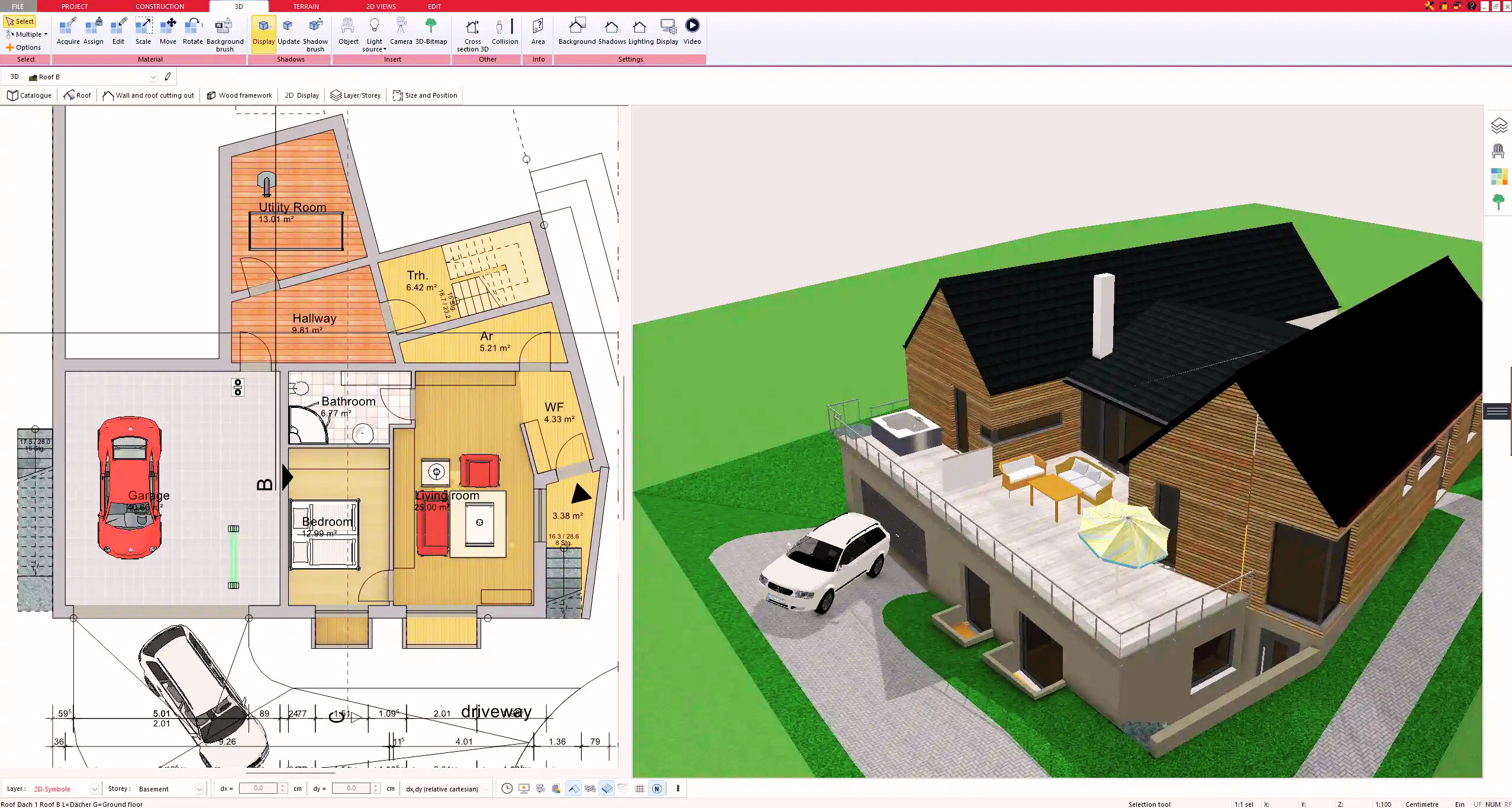


2. Windows & Doors



3. Floors & Roof
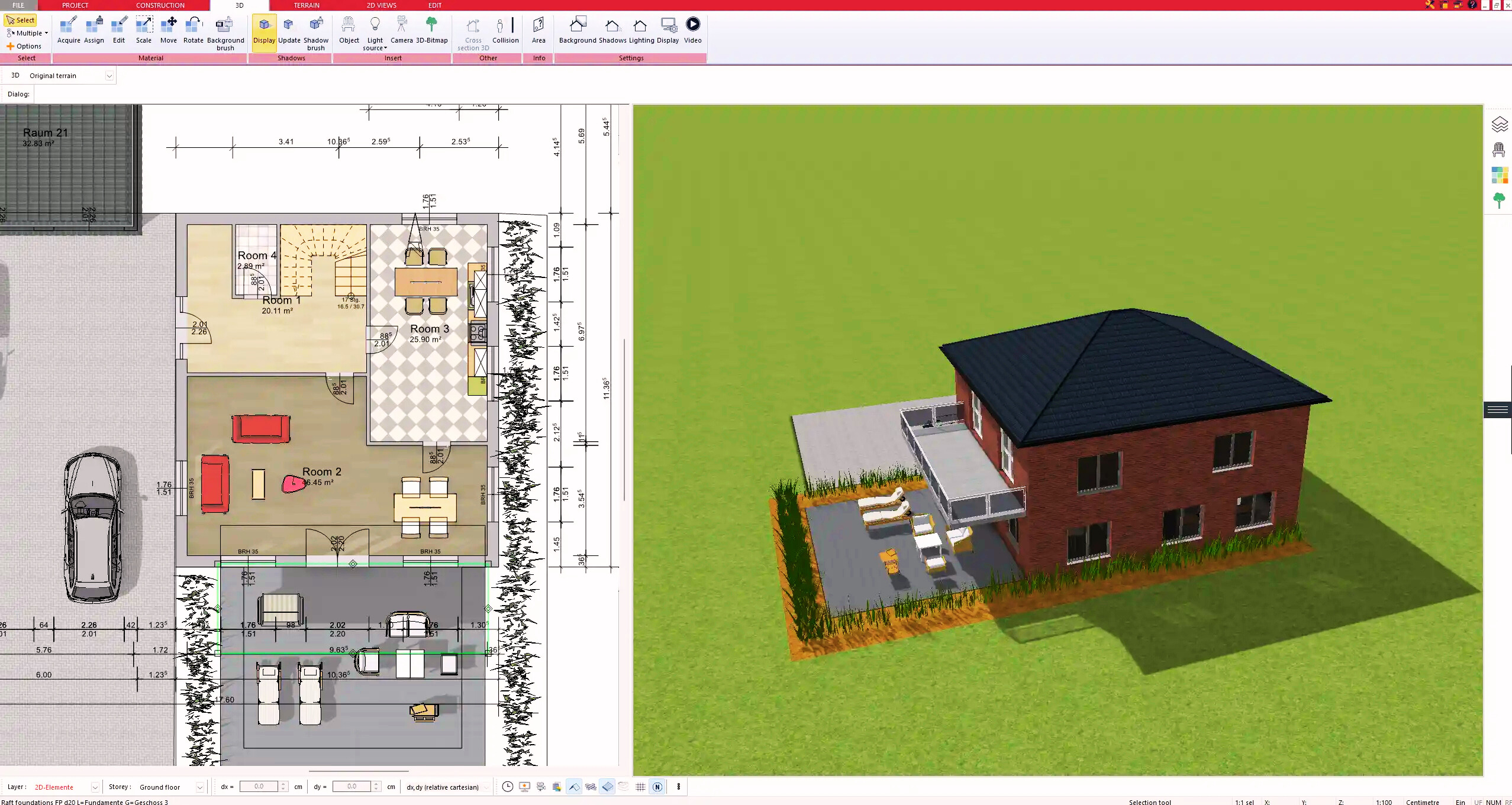


4. Textures & 3D Objects
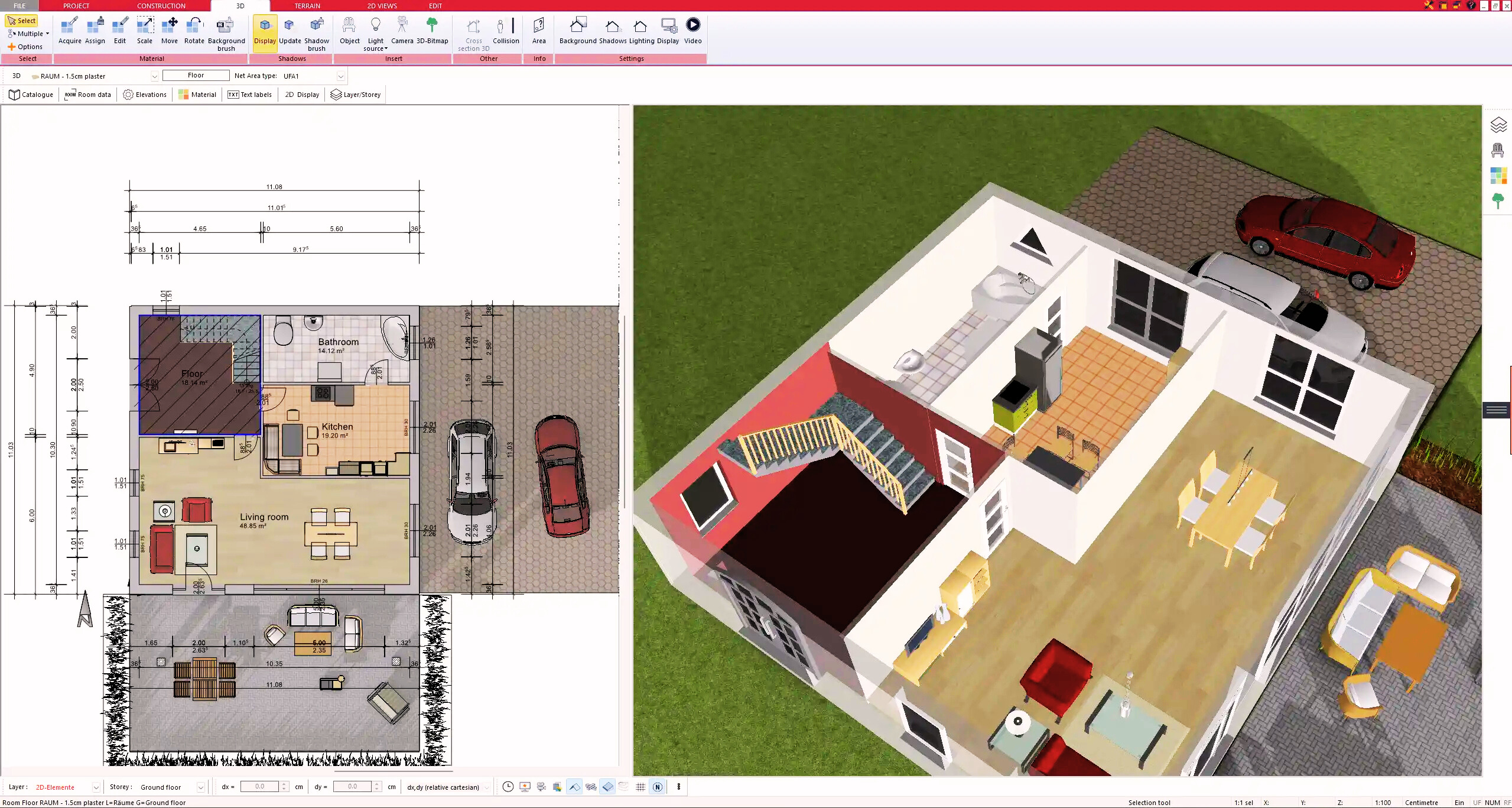


5. Plan for the Building Permit
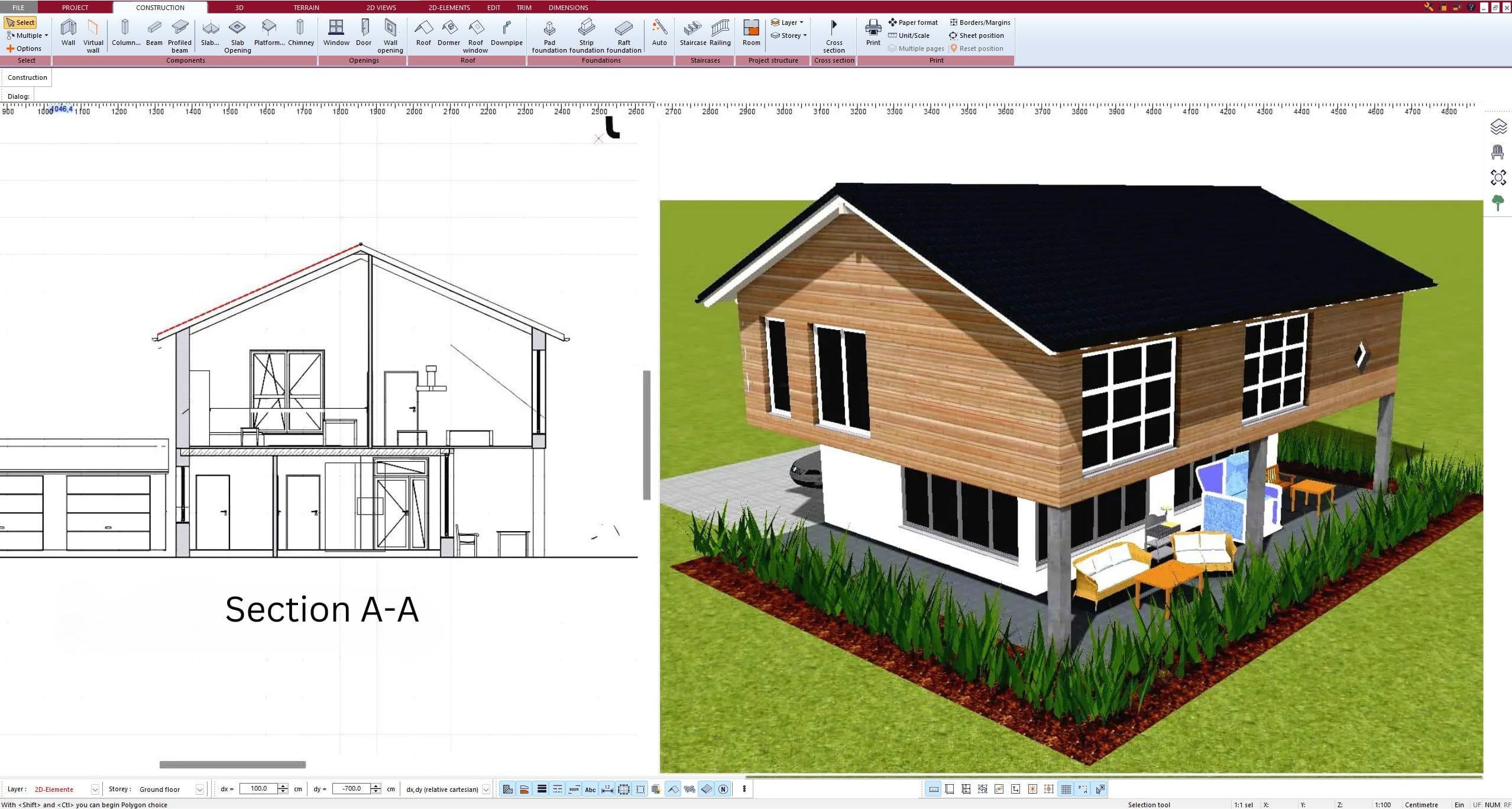


6. Export the Floor Plan as a 3D Model for Twinmotion
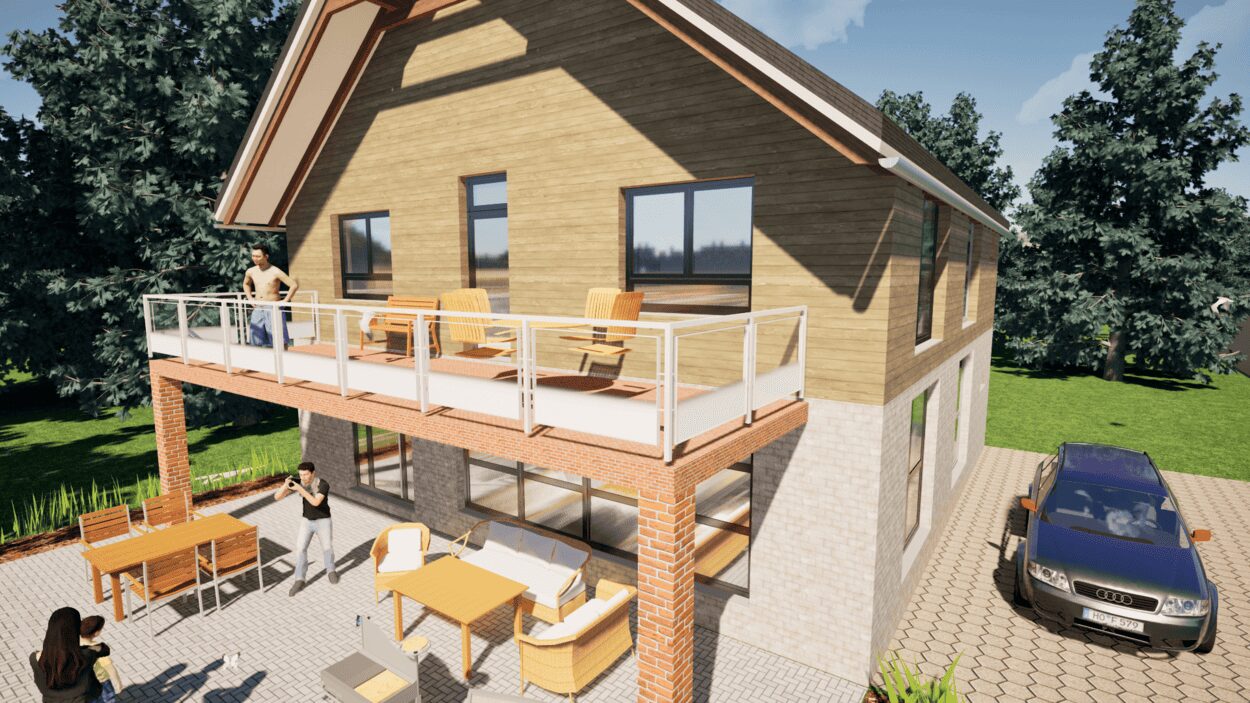


- – Compliant with international construction standards
- – Usable on 3 PCs simultaneously
- – Option for consultation with an architect
- – Comprehensive user manual
- – Regular updates
- – Video tutorials
- – Millions of 3D objects available


